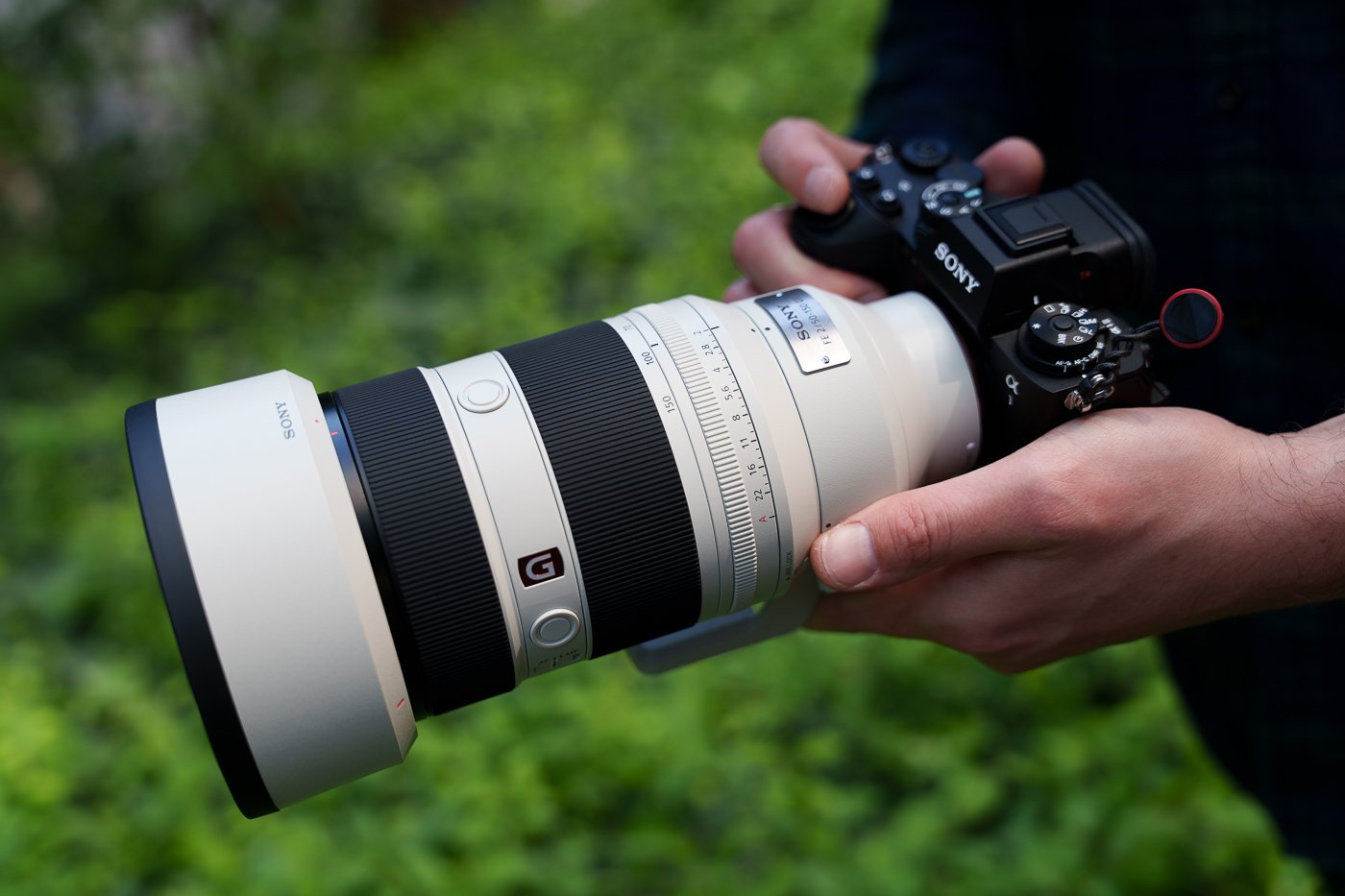Announced in April 2025, the Sony FE 50-150mm f/2 GM stands out from all other fast zooms on the market by combining an atypical and versatile focal range with a very large constant aperture of f/2.
The 80th lens for the E-mount is truly out of the ordinary. Barely bulkier than a classic 70-200mm zoom, it aims to become an essential new companion for wedding, event, or sports photographers.
This zoom aims to deliver very high optical performance, in line with its equally high price tag. We had the chance to try out this unique lens over several weeks – here is our full review.

Sommaire
A f/2 zoom to make f/2.8 look outdated?
The Sony FE 50-150mm f/2 GM may well be the most accomplished lens from the electronics giant to date. It adds another cornerstone to a lineup that now includes 80 lenses.
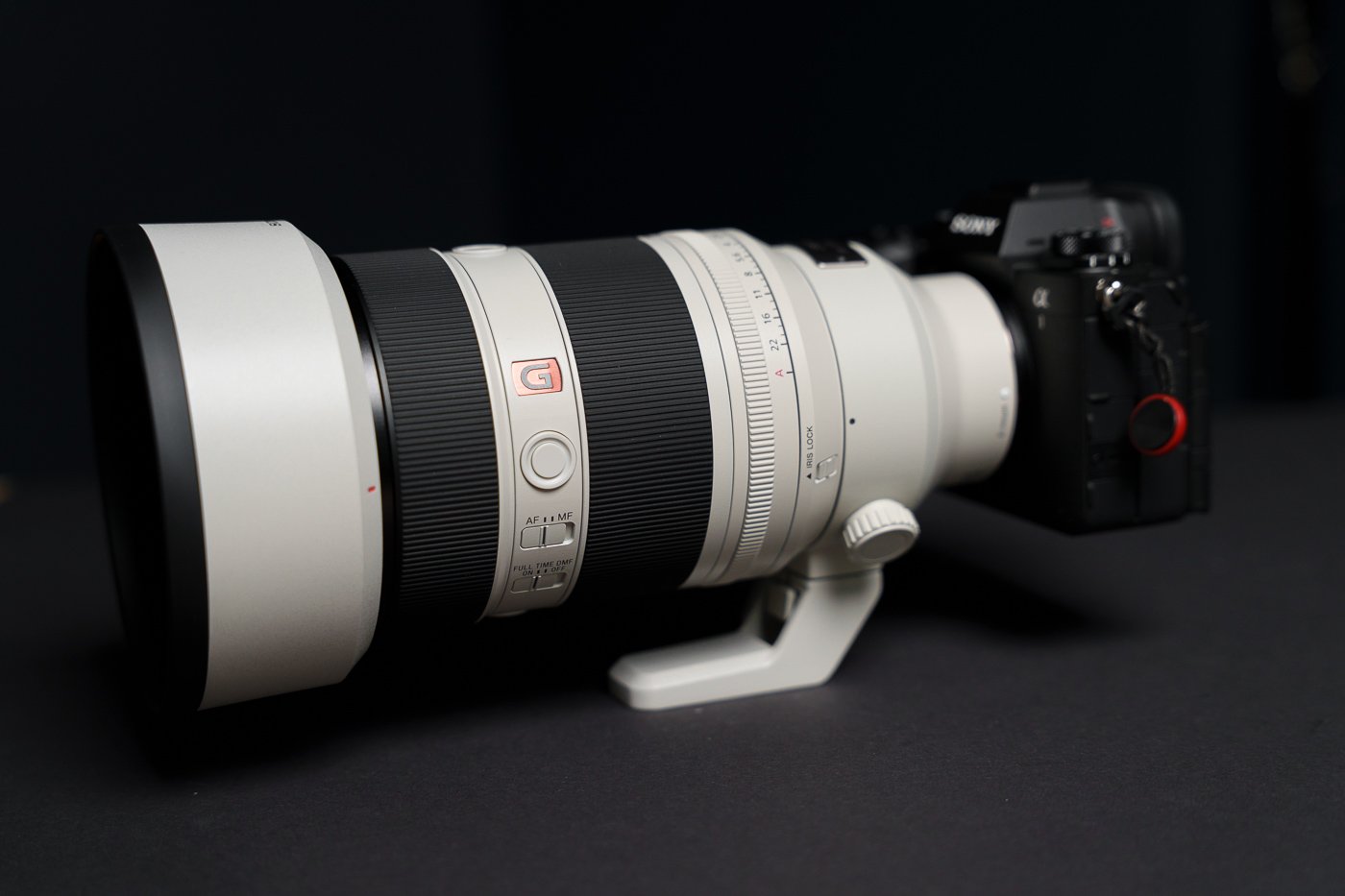
Are we witnessing a “shake-up” in the world of zoom lenses? For a long time, the classic 16-35 mm (or even 12-24 mm), 24-70 mm, and 70-200 mm trinity with a constant f/2.8 aperture was the alpha and omega of every photographer’s kit.
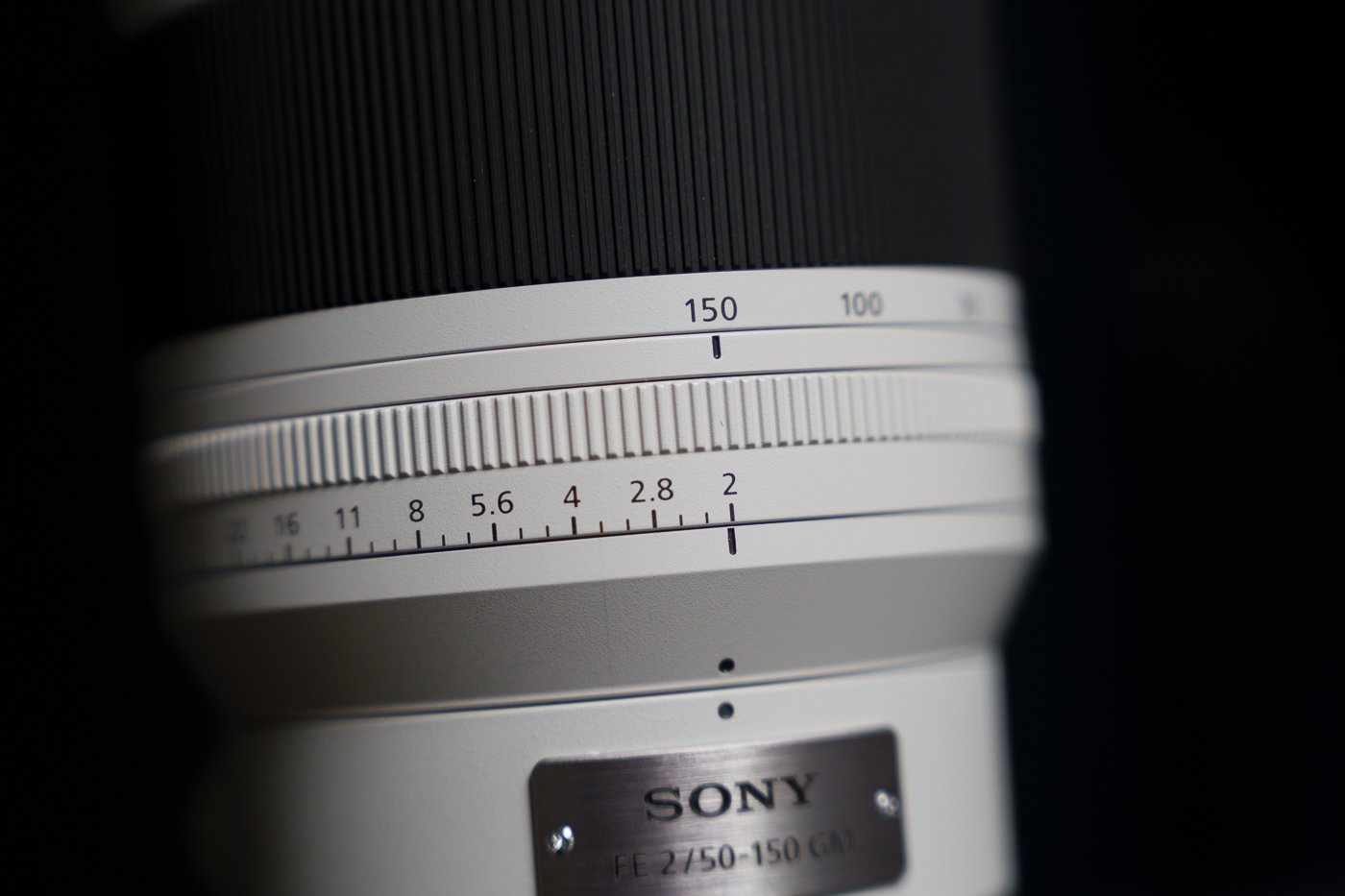
However, since the rise of mirrorless cameras, this legacy from 1990s DSLRs has been increasingly challenged. In fact, Canon fired the first shot nearly 7 years ago with its RF 28-70mm f/2 L USM. Sony responded in 2024 with a refined and lighter version.
In the meantime, Sigma released a 28-105mm f/2.8 DG DN Art, which we find much more relevant than the traditional 24-70mm f/2.8 standard zoom. Alongside these reimagined transstandards, we also recall Tamron and then Samyang, both of which launched bright zoom lenses aimed at versatility for both everyday shooting and sports photography, such as the 35-150mm f/2-2.8.
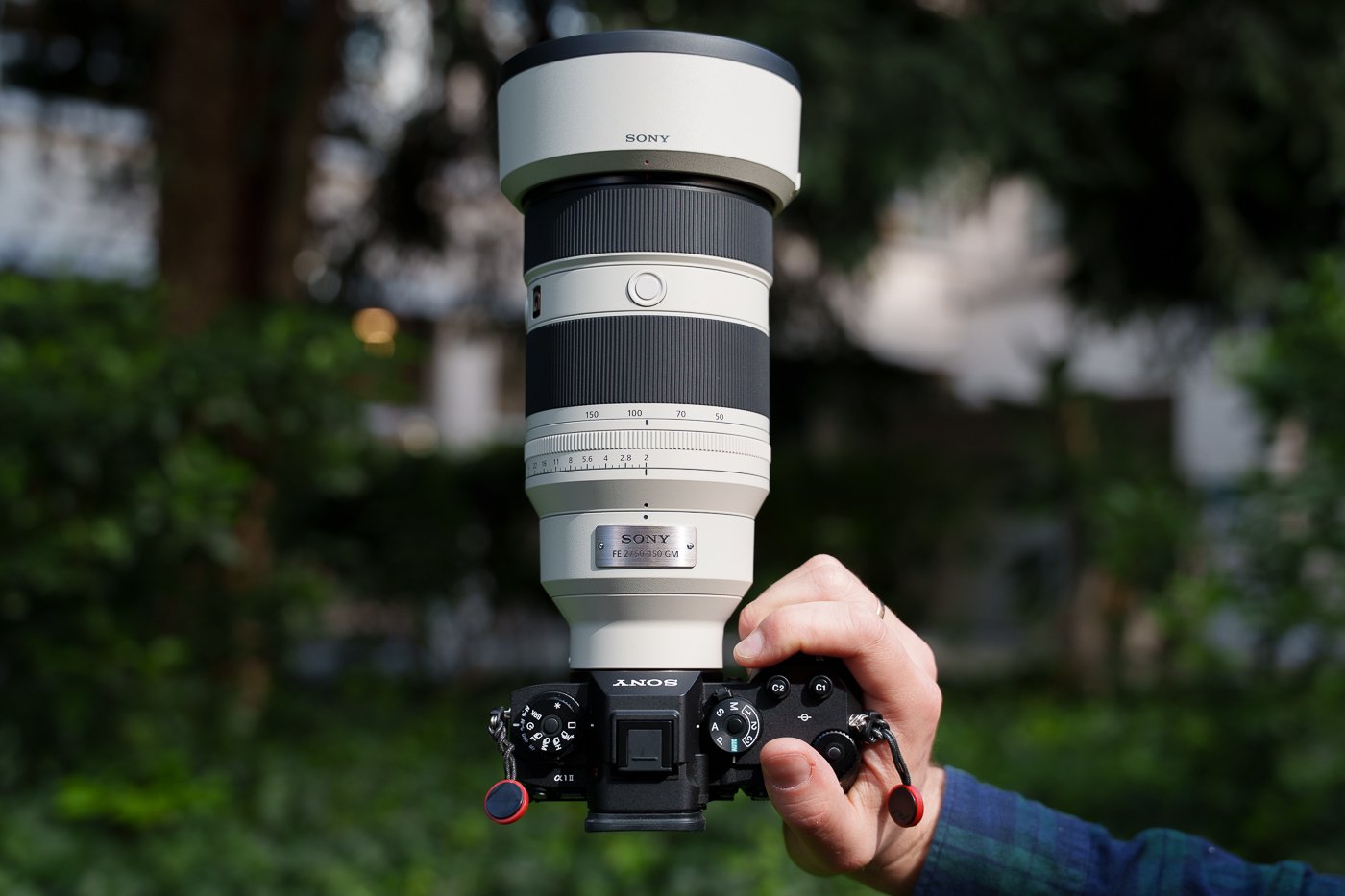
Thus, with its new zoom, Sony takes this approach even further with an exceptional lens that could win over both portrait photographers and professional sports shooters.
To achieve this, this new zoom lens relies on a very advanced optical formula, composed of 19 elements arranged in 17 groups. It includes two Super ED elements, two XA glass elements, two aspherical lenses, and three ED glass elements. Sony promises exceptionally sharp images right from the widest aperture and across the entire focal range. Quite the ambition!
The most impressive feature is undoubtedly this constant maximum aperture of f/2. This wide aperture naturally implies a rather large lens design. However, Sony’s engineers have worked to ensure that this 50-150mm f/2 remains barely bulkier than a standard 70-200mm f/2.8 zoom.
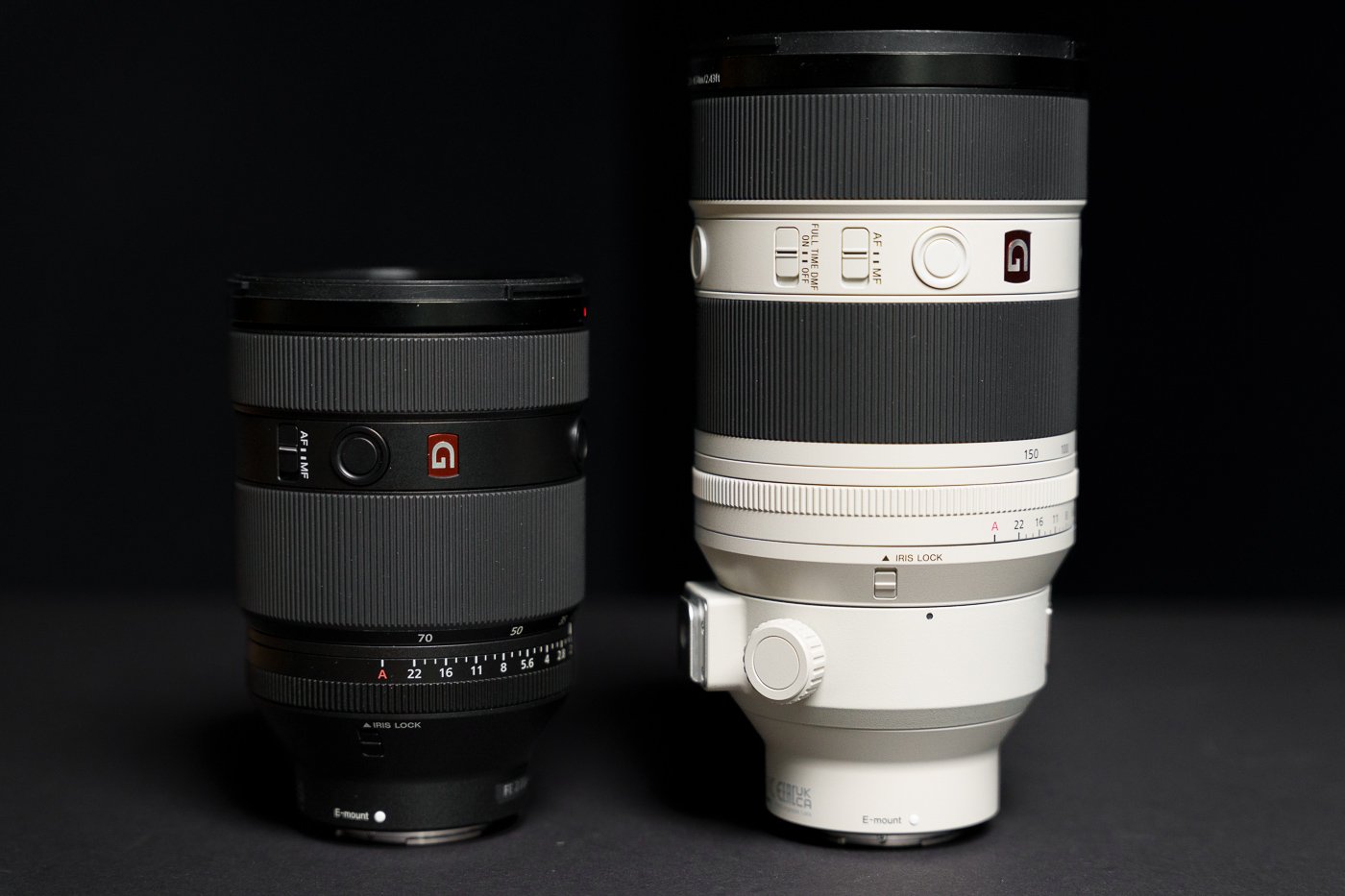
An 11-blade aperture ensures a pronounced yet smooth bokeh. The focusing distance varies from 40 cm at 50mm to 74 cm at 150mm.
Autofocus is powered by a quad XD linear motor, the same found in the brand’s top-performing zoom lenses. Despite its size, it is not compatible with 1.4x or 2x teleconverters, which slightly limits its use for wildlife photography, for example.
It’s also worth noting that the lens lacks optical stabilization. This trade-off helps reduce its bulk but can be a drawback, especially at the maximum focal length or in low light conditions. The risk of motion blur is significant, despite the wide f/2 aperture.
Here is the full specification sheet for the Sony FE 50-150mm f/2 GM:
- Focal range: 50–150 mm (equivalent to 75–225 mm in APS-C)
- Designed for: full-frame sensor
- Max aperture: f/2
- Min aperture: f/22
- Angle of view: 47° – 16°25′
- Optical construction: 19 elements in 17 groups, including 2 Super ED glass elements, 2 XA elements, 2 aspherical elements, and 3 ED glass elements
- Diaphragm: 11 blades
- Minimum focusing distance: 40 cm (at 50 mm) to 74 cm (at 150 mm)
- Image stabilization: No
- Weather sealing: moisture and dust resistance
- Maximum magnification: 0.2x
- Focus: autofocus, 4 XD linear motors
- Filter diameter: 95 mm
- Dimensions (D × L): 102.8 × 206 mm
- Weight: 1340 g
- Included accessories: front and rear caps, lens hood, carrying pouch, tripod collar foot
- Mount: Sony E
- Launch price: $3,898
Build quality and ergonomics of the Sony FE 50-150mm f/2 GM
If you’ve ever used a 70-200mm f/2.8 telezoom, this new 50-150mm f/2 will feel familiar. On paper it’s slightly bulkier, but in reality, it’s the same length as the FE 70-200mm f/2.8 GM OSS II — that is, 20.6 cm. Due to the wider f/2 aperture, its maximum diameter is larger: 10.2 cm compared to 8.8 cm.
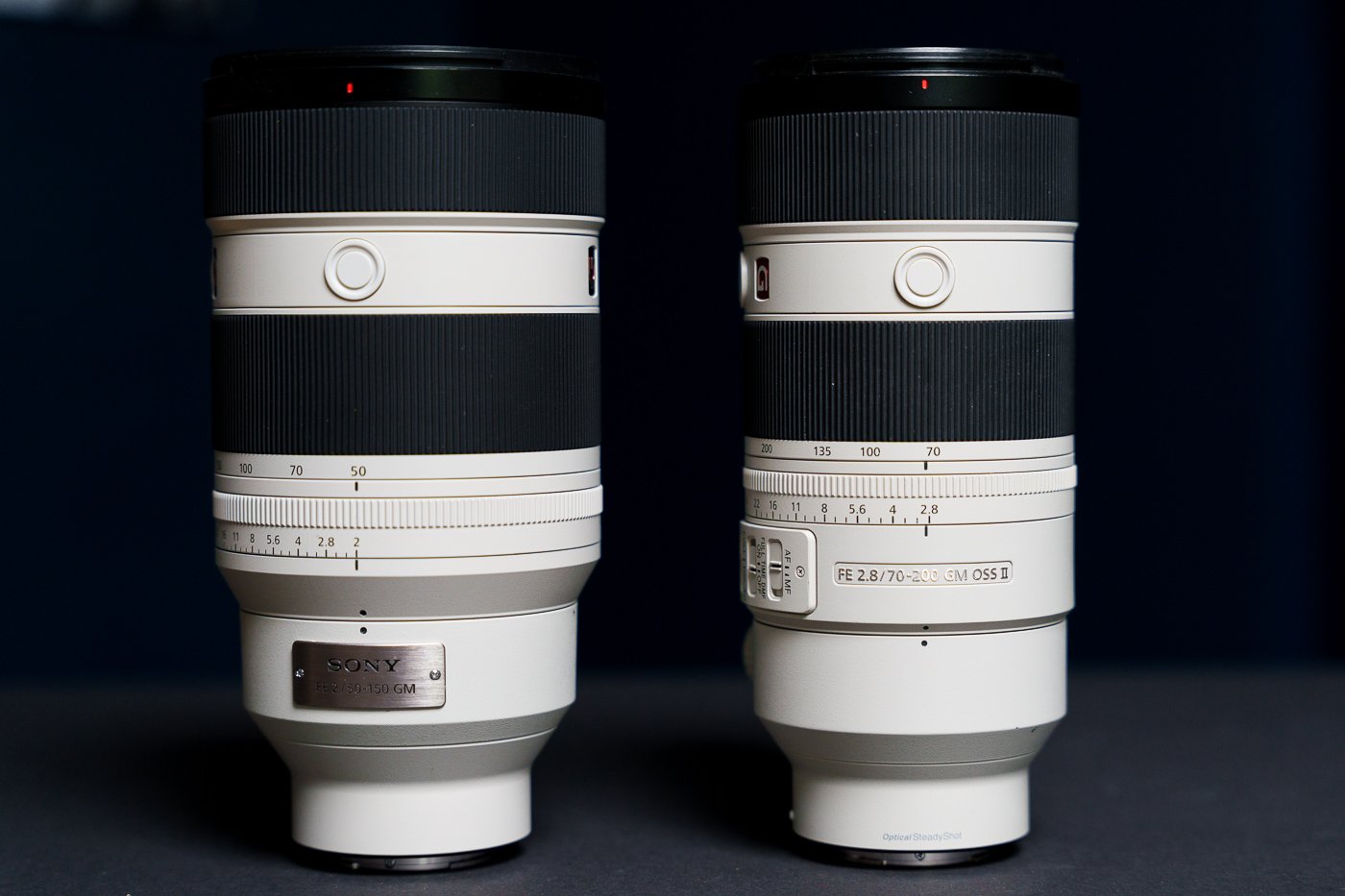
A larger aperture also means a larger front element. Anyone wanting to use filters will need to invest in a 95 mm glass filter! Although wider and longer, this 50-150mm actually feels more compact and almost smaller in the hand thanks to its density.
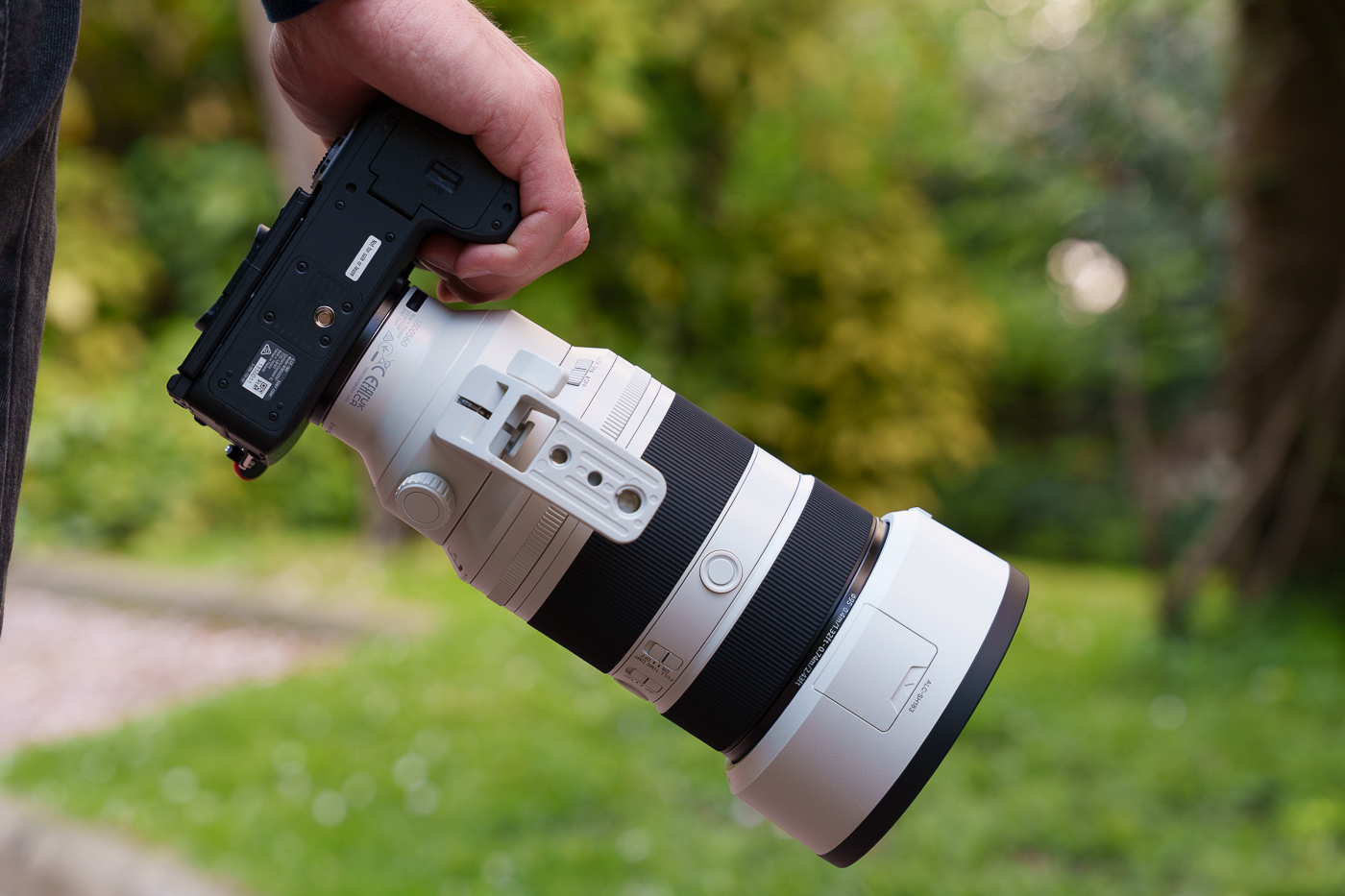
Still, even though it weighs 1.34 kg — heavier than the 70-200mm f/2.8 GM II (1.045 kg) — this new zoom is actually lighter than Sony’s first 70-200mm f/2.8! Comparable to the Sigma 70-200mm f/2.8 DG DN OS Sports, it’s even lighter than the Nikkor Z 70-200mm f/2.8 VR S. However, all these lenses feature optical stabilization — unlike this 50-150mm. That clearly makes a difference in weight.
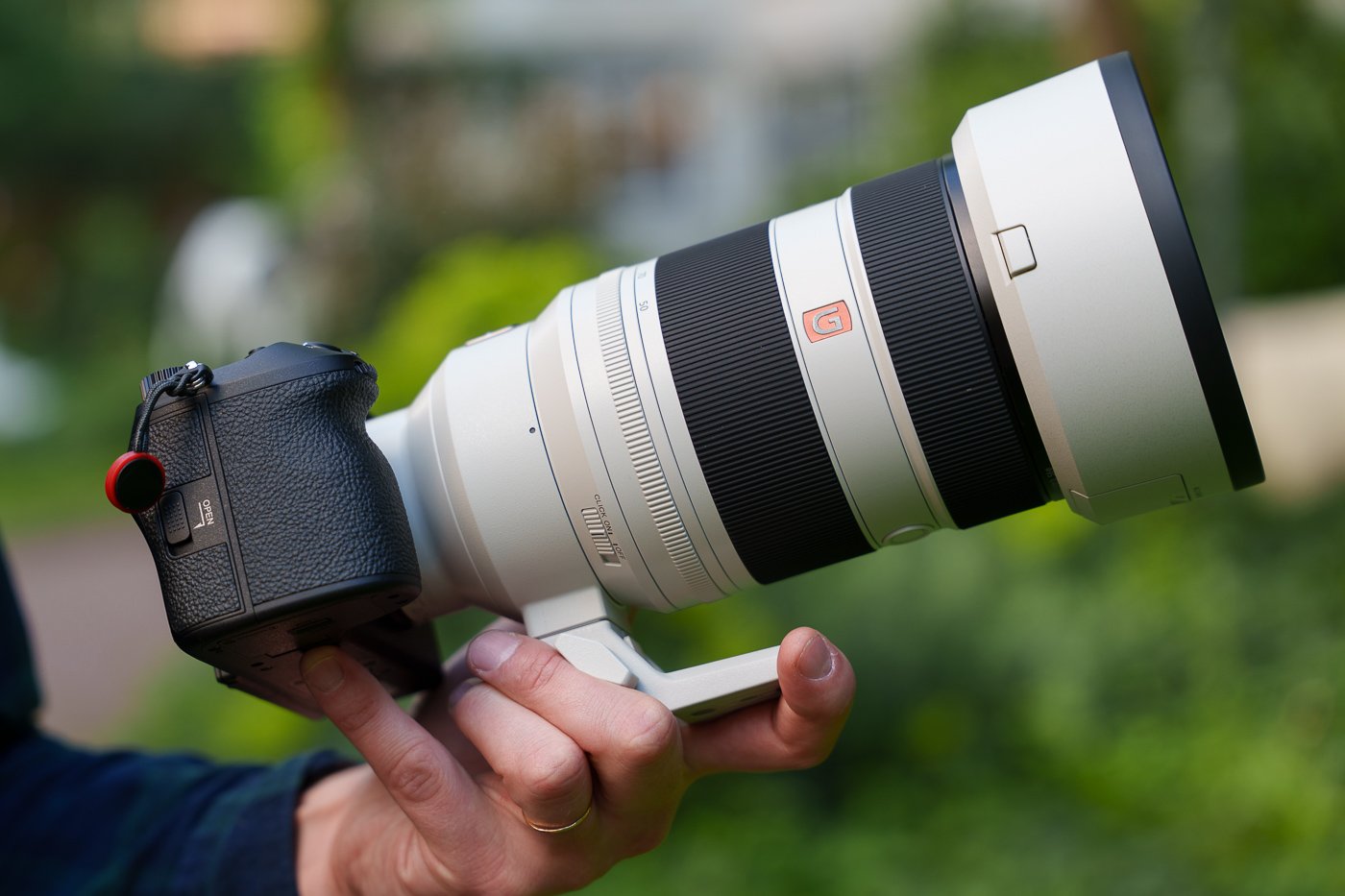
Regardless of how you look at it, the build quality of this Sony zoom is undeniably excellent. It fully deserves its place in the G Master series.
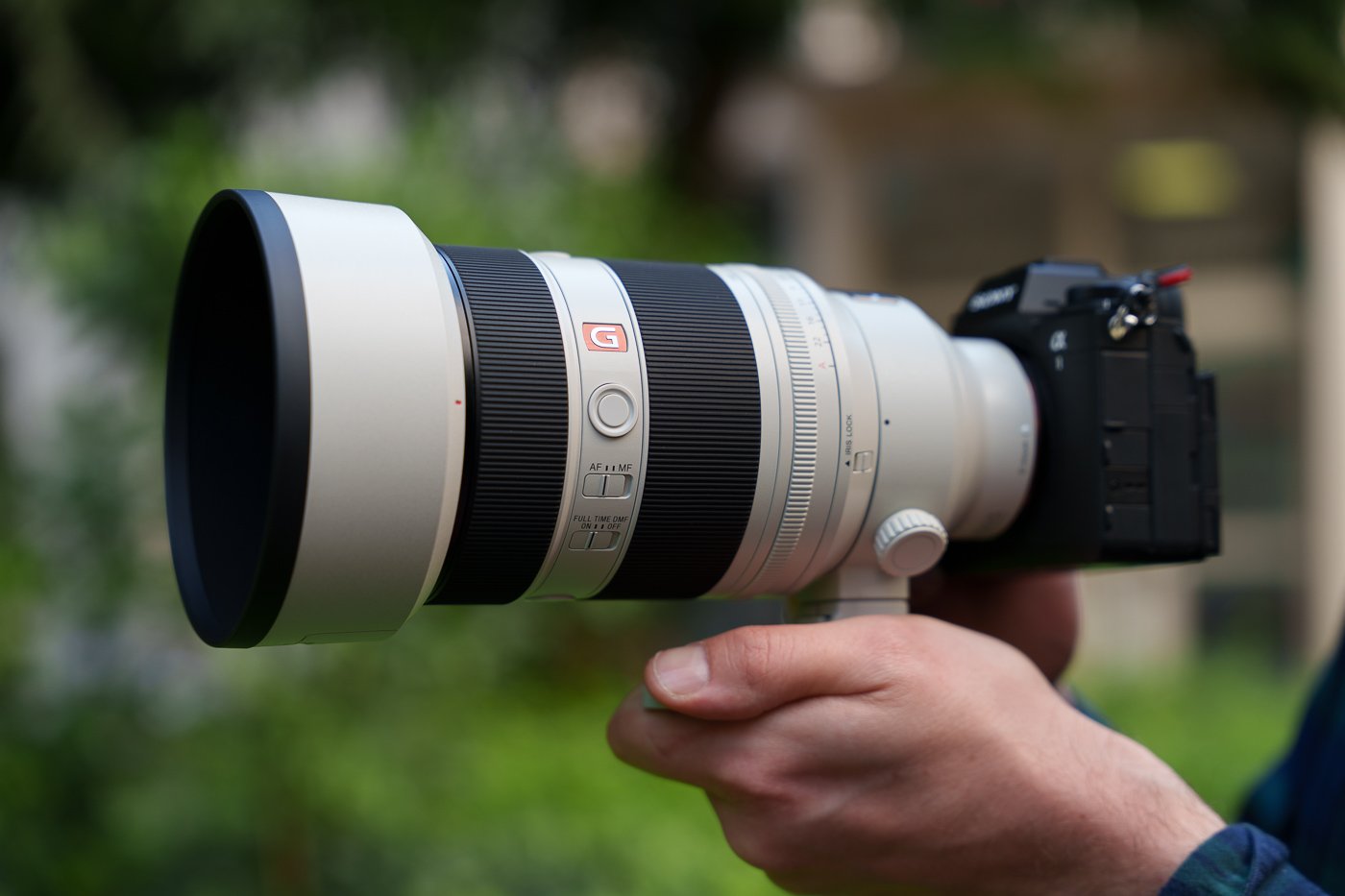
Like all of Sony’s G and GM telezooms and long lenses, the 50-150mm comes in an off-white finish, designed to better withstand prolonged sunlight exposure — and to look more “professional.”
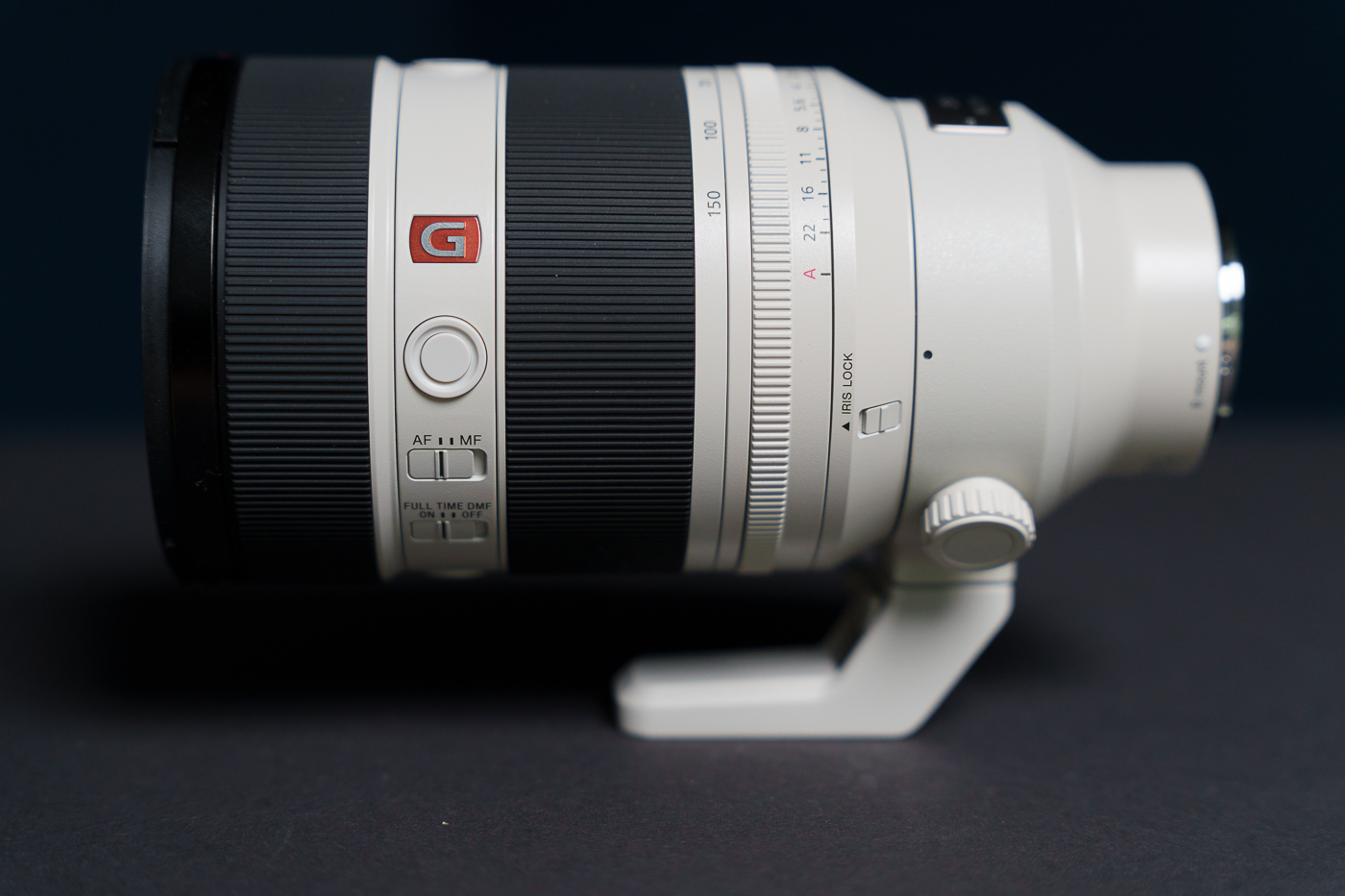
As for controls, you’ll find the standard setup for non-stabilized G Master lenses:
- aperture ring (clickless and lockable)
- AF / MF switch
- DMF switch
- three customizable focus hold buttons
- zoom ring
- focus ring
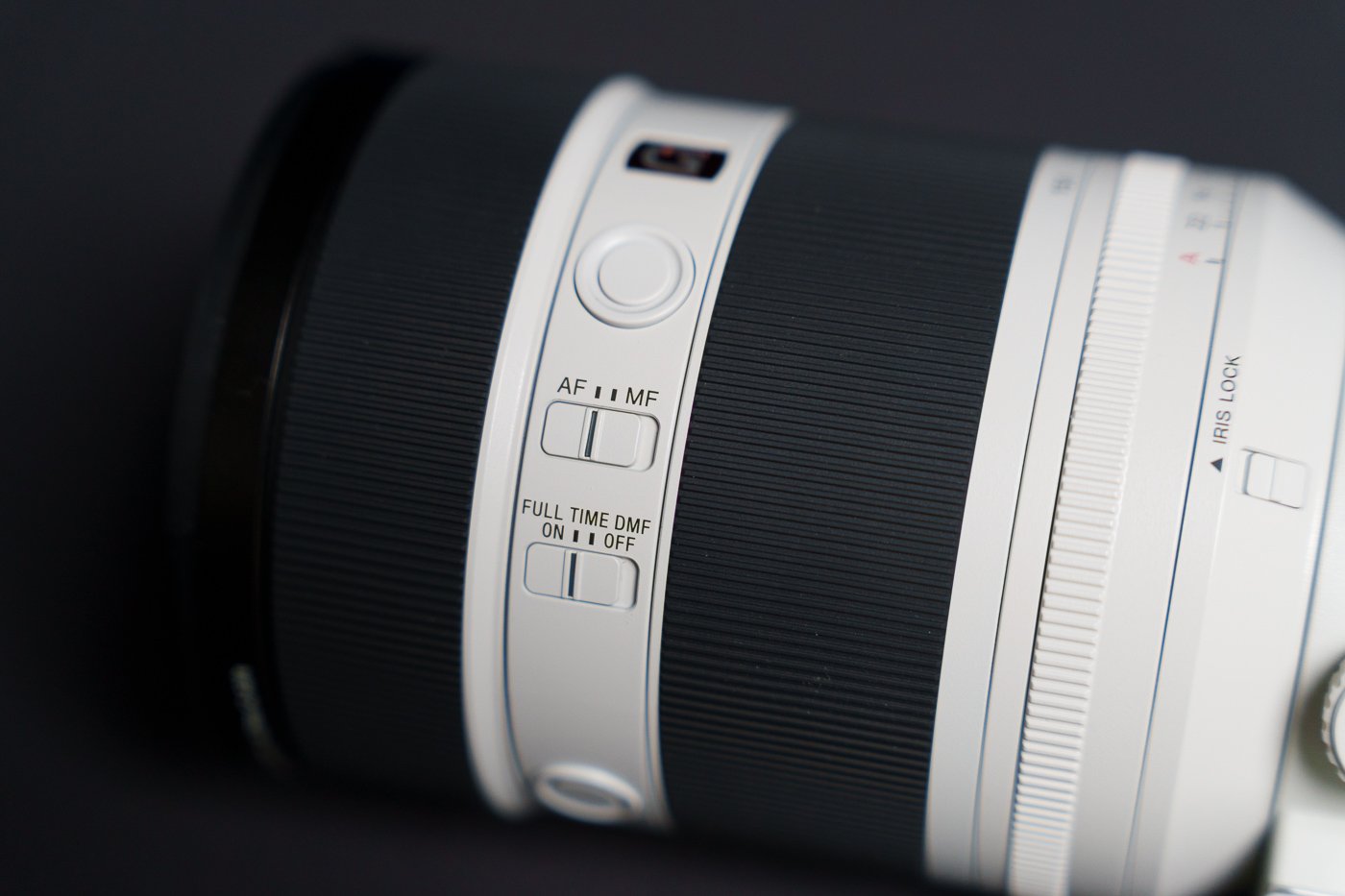
The zoom mechanism is internal, which is always a welcome feature. The zoom ring’s rotation is well-executed, both smooth and short enough to allow quick transitions from 50 to 150 mm. No tension adjustment switch is found here — a feature that has become fairly common on GM zooms in recent years.
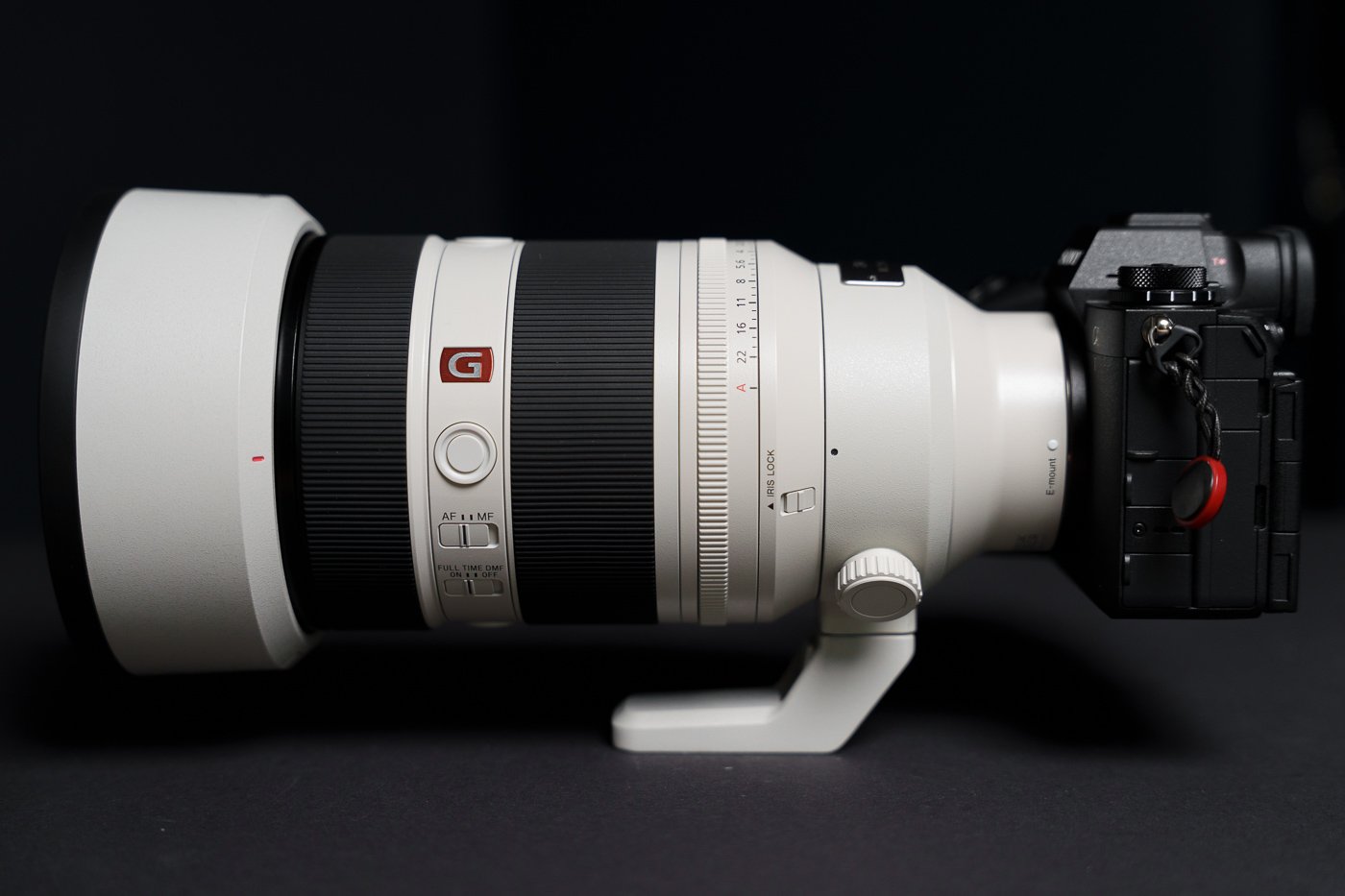
A minor complaint concerns the end stops — whether at 50 or 150 mm, it sometimes feels like the zoom ring “hits” an internal wall. The lens emits a rather harsh and unwelcoming thump. Some soft dampers on each end could have made a real difference.
The focus ring also offers precise rotation, though it’s not quite as smooth as what we observed on the FE 28-70mm f/2 GM, for instance.
Designed for tough environments, this lens features a robust build with extensive sealing. It’s therefore well suited for outdoor use, even in unpredictable weather, offering effective protection against dust and moisture.
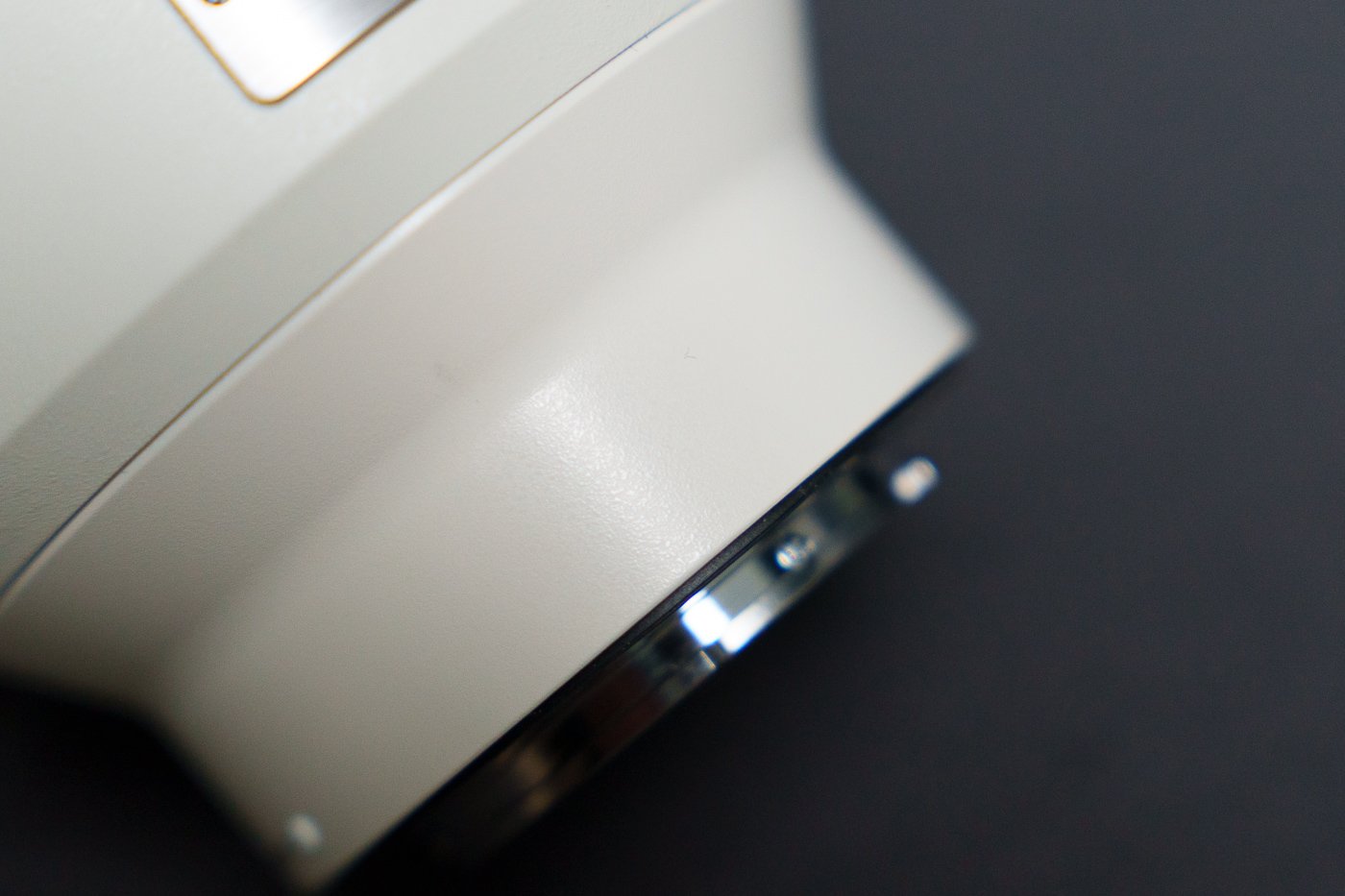
Finally, in a bid to further reduce bulk, the Sony telezoom comes with a new, shorter and more discreet lens hood.
Sony’s engineers have clearly worked hard to minimize the overall size and weight of this lens, making it easier to shoot handheld — something wedding photographers will surely appreciate.

That said, this Sony zoom is still a fairly large lens overall, and if you plan to use it on the sidelines of a field, a monopod will definitely be welcome — it’ll also help reduce motion blur.
Lastly, even though the form factor is well controlled, the focal length range remains relatively short, meaning wildlife and outdoor sports photographers might feel somewhat limited — especially since teleconverters cannot be used.
Image quality of the Sony FE 50-150mm f/2 GM
To evaluate the sharpness of this Sony zoom, we paired it with a Sony A1 II and its 50.1 MP full-frame sensor, as well as a Sony A7 IV with a 33 MP sensor.
Feel free to click on each image to view it in full quality.

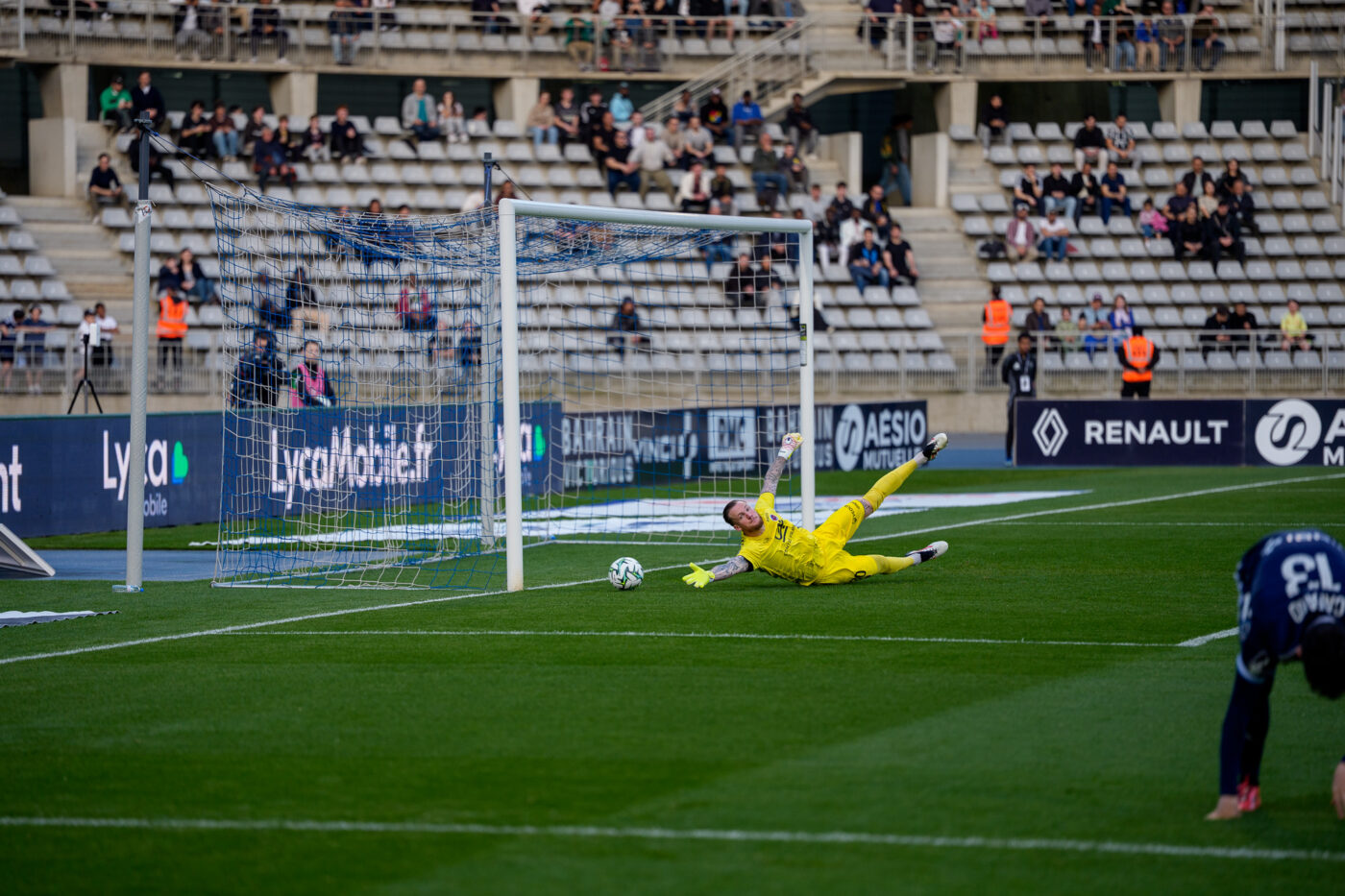

Sharpness
Sharpness is an area where this lens truly excels. At 50 mm and wide open at f/2, images show excellent detail in the center, with a slight drop in resolution and contrast toward the edges.
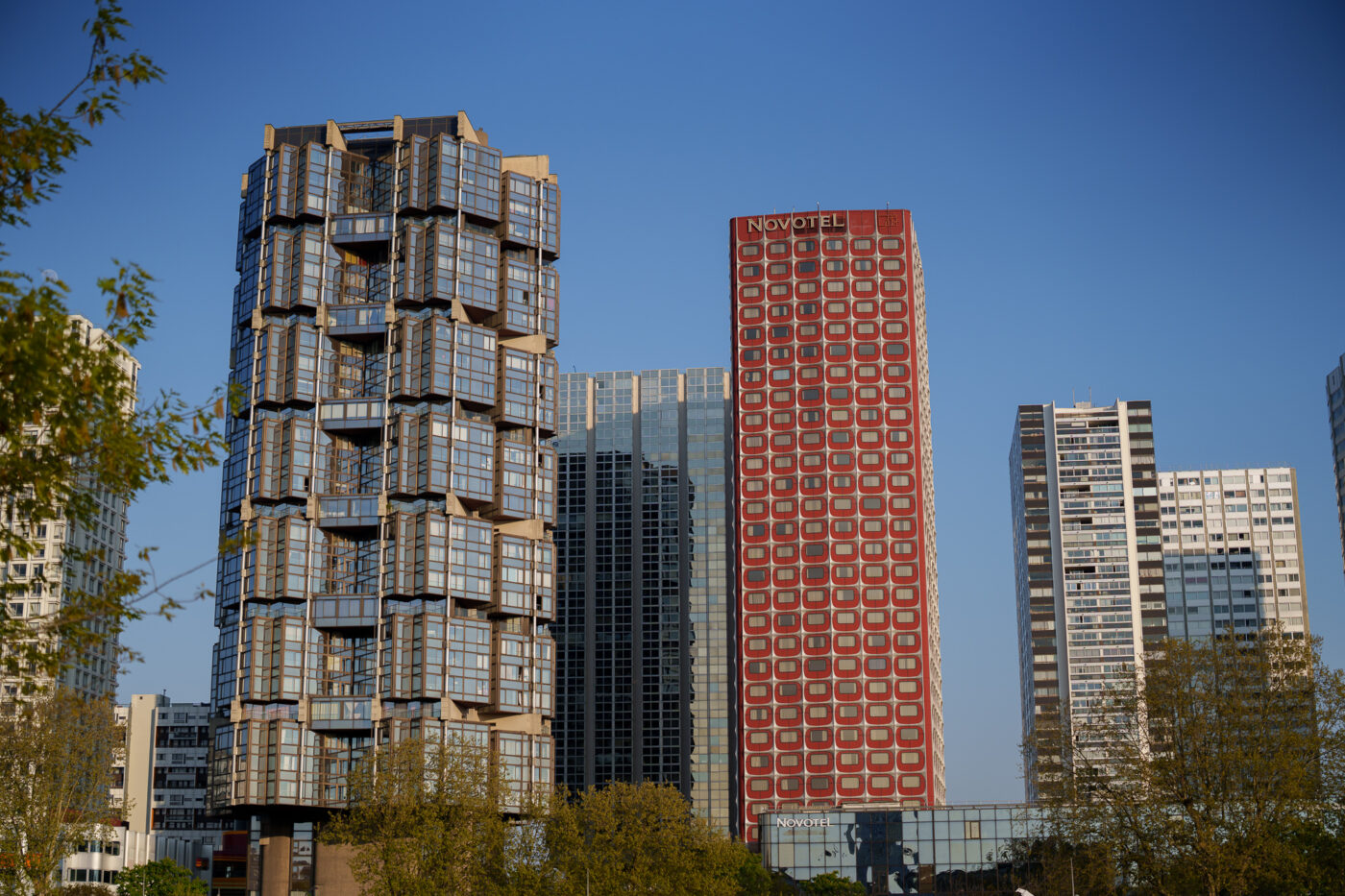
Stopping down to f/2.8 brings a noticeable improvement in center sharpness, reaching near-optimal performance. However, the edges still lack a bit of precision.

It’s only by f/4, or even better at f/5.6, that you get uniform sharpness across the frame. That said, center sharpness at f/2.8 is already near perfect.

Zooming in to 100 mm, you see a significant improvement in sharpness and even better consistency across the frame — with outstanding results from f/2.8.

The same trend holds at 150 mm. Images are extremely detailed, with strong contrast and excellent color fidelity.


This 50-150mm f/2 delivers excellent image quality right from f/2, living up to its promises. Naturally, it can be seen as a direct extension of the 28-70mm f/2.
If you were to line up images taken with both lenses, you could easily believe they came from a single, continuous zoom range of 28-150mm f/2! One can always dream of seeing such a zoom lens become reality one day.


Distortion
When it comes to optical distortion, this lens is generally a strong performer, though not completely flawless.
At 50 mm, you’ll notice some barrel distortion. At mid focal lengths, distortion decreases significantly and even reverses into pincushion distortion at 150 mm. In fact, the distortion at 150 mm is even more visible than at the wide end.


This phenomenon is automatically corrected on Sony mirrorless cameras, but at the time of testing, Lightroom had not yet applied these built-in corrections. You’ll need to correct distortion manually or wait for an upcoming Adobe update.
Chromatic Aberrations
The XA and ED glass elements perform their role extremely well, even under high-contrast lighting conditions. Both purple and green fringing are virtually nonexistent, saving you tedious correction work in post-processing.


At 50, 100, or even 150 mm, there are no major color shifts, except for a slight contrast loss in out-of-focus areas. From f/2.8, this effect decreases, and it disappears entirely at f/4.
Vignetting
As expected from such a bright and modern lens, vignetting is very noticeable at wider apertures.
The behavior is quite consistent across all focal lengths. At f/2, corner darkening is very pronounced — so much so that it feels like a full stop of light is lost at the edges.


The issue is still quite visible at f/2.8 and starts to decrease significantly at f/4, though it takes stopping down to f/5.6 to be almost entirely gone. Thankfully, it can be corrected easily in post-production, or you can rely on in-camera JPEG corrections.
Bokeh
It’s when you examine the background blur that you realize just how meaningful an f/2 aperture can be. At 50 mm, the bokeh is already very prominent, giving images a distinctive character. The blur circles are nicely rounded and free of any defects.

Zoomed in to 150 mm, this lens turns into a formidable portrait tool. The rendering is not far from what you’d expect from a 135 mm f/1.8 prime. The subject is very cleanly isolated from the background, which melts away beautifully. Portrait photographers will definitely appreciate this gem.



Autofocus
The autofocus system is powered by four XD linear motors, delivering fast, accurate, and silent focusing. These motors are now well-known from Sony’s latest high-end optics.

Paired with a camera like the Sony A1 II, focusing is lightning-fast. The point of focus is acquired almost instantly. Whether you’re at 50 or 150 mm, at f/2 or f/16: the lens remains rock solid.
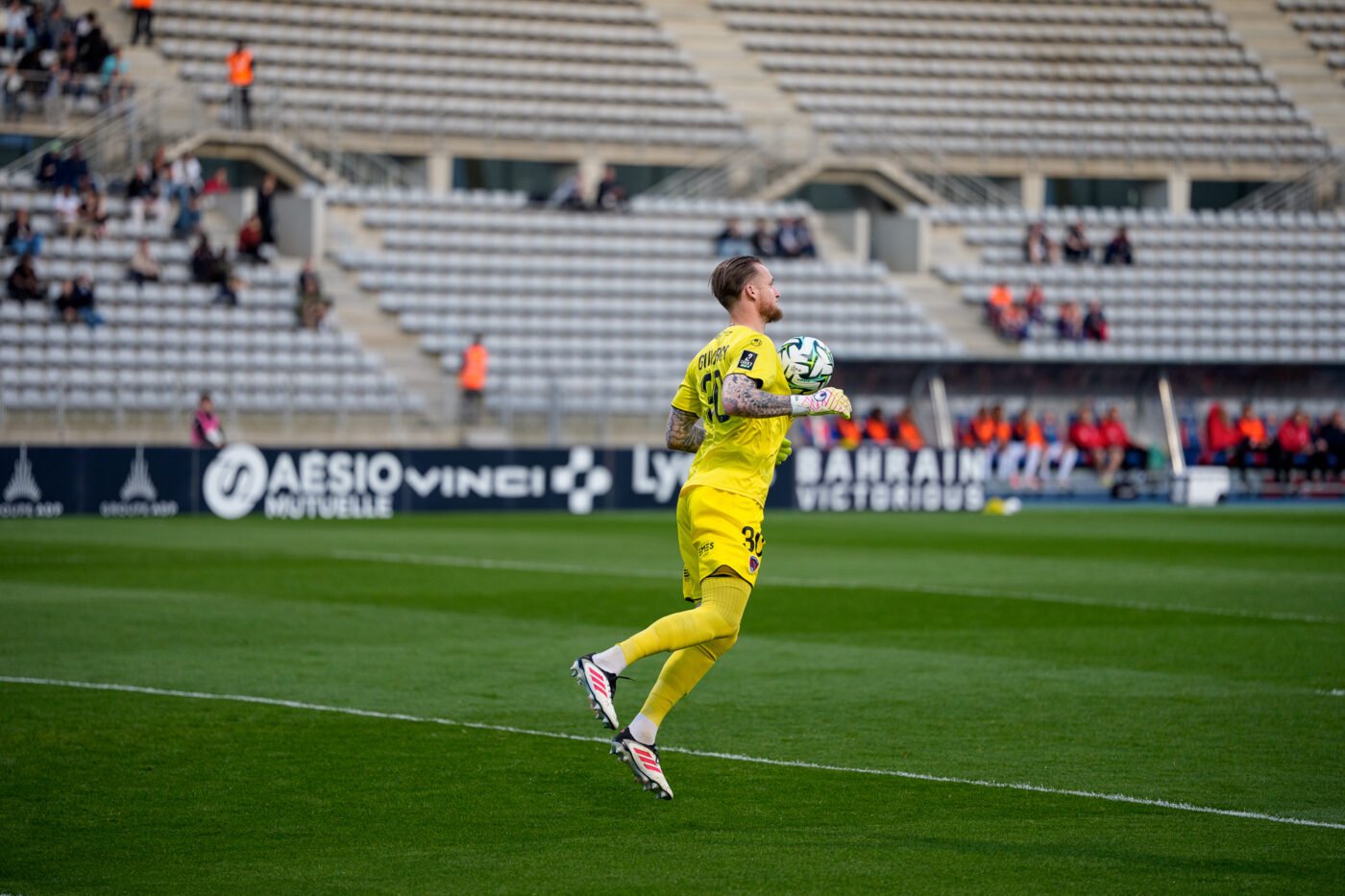
We tested the lens during a football match between Paris FC and Clermont Foot. Even shooting at 30 fps, the only time focus was lost was when another subject entered the frame. Even then, the lens regained focus within 1 or 2 frames.

We also tried this lens for animal and insect photography. Again, the results were very convincing. If focus wasn’t locked immediately, it was usually because the subject was too small in the frame.


Videographers will also be pleased: focus breathing is virtually absent. What’s more, the zoom is parfocal, meaning focus is maintained while zooming — a significant plus for video productions.
(Lack of) Stabilization
One final point worth mentioning: the absence of optical image stabilization. While this isn’t usually an issue at 50 mm, it can become more problematic beyond 100 mm — especially at full zoom, in low-light conditions or when using slower shutter speeds.
In most scenarios, this won’t be a major limitation, unless you’re attempting handheld long exposures, where results become far less predictable.
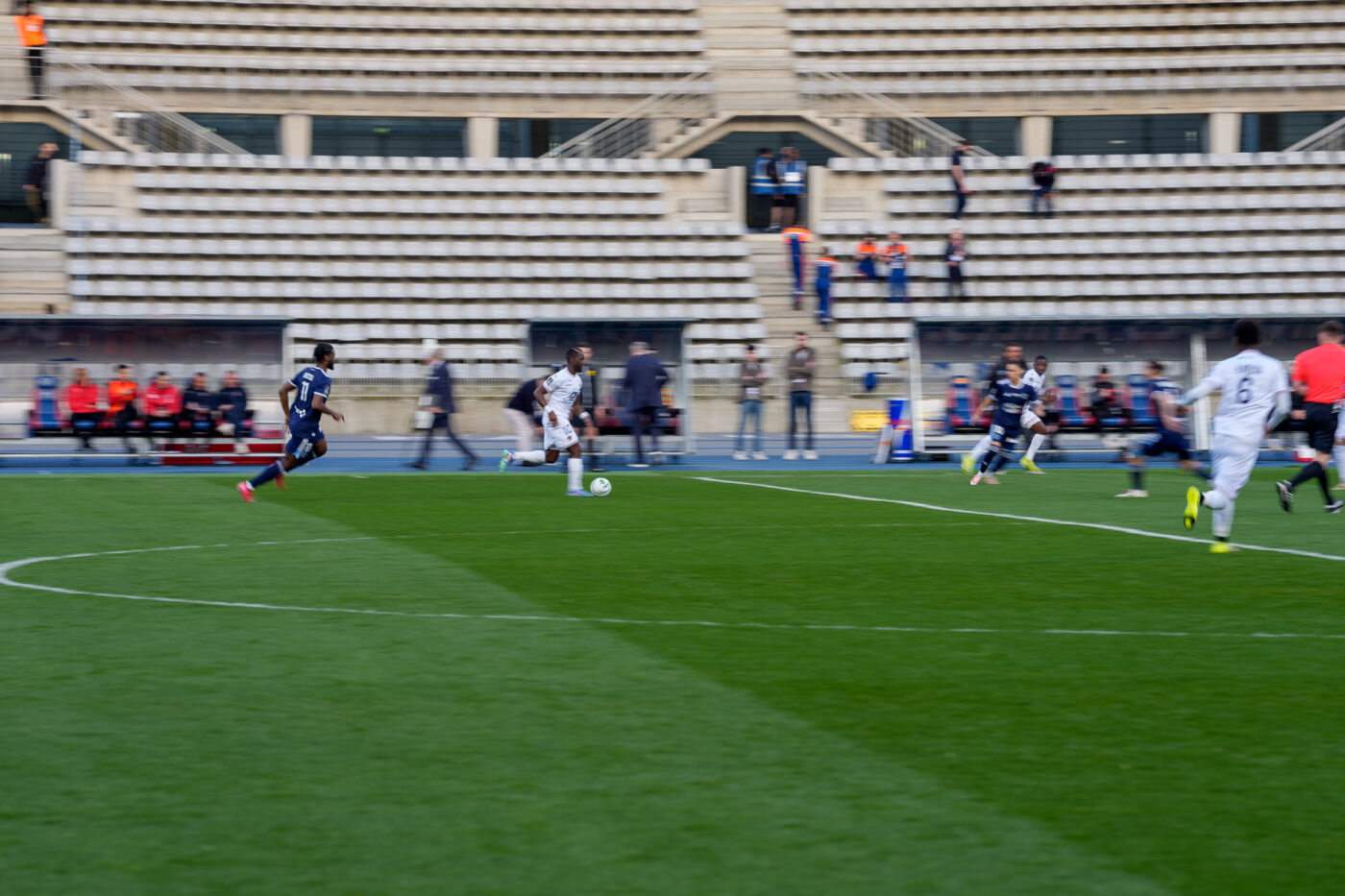
For sports or wildlife photography, where faster shutter speeds are typically used, this shouldn’t be much of a concern either. That said, it would have been great to have optical stabilization, even at the cost of a bit of extra weight…

That said, thanks to the improved in-body stabilization on the Sony A1 II, we managed to get very good handheld results. At 150 mm, we were able to shoot up to 1.3 seconds handheld — nearly 8 stops of stabilization as claimed by the manufacturer!
Sample Images
Here is a selection of images captured with the Sony FE 50-150 mm f/2 GM:

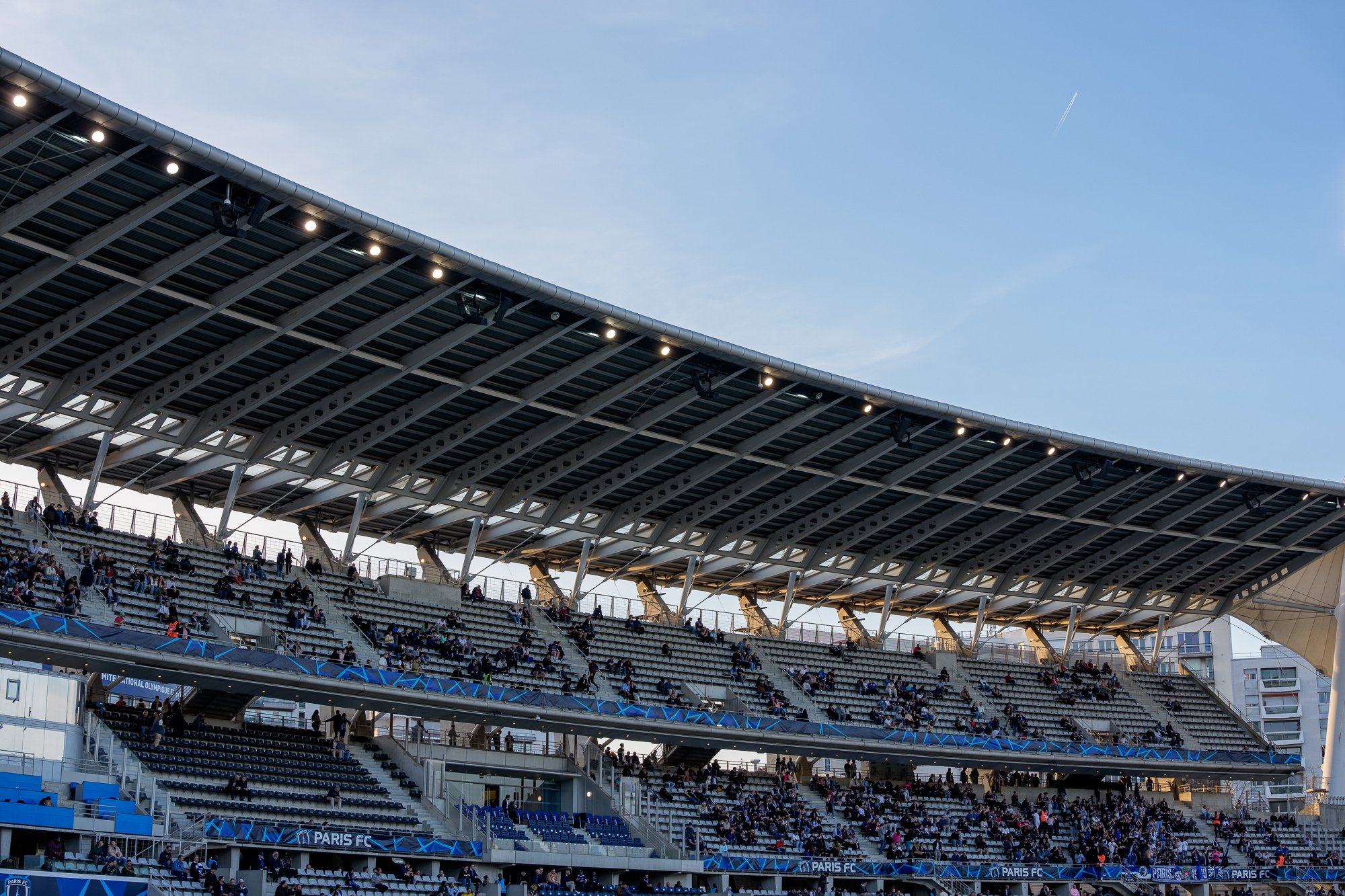

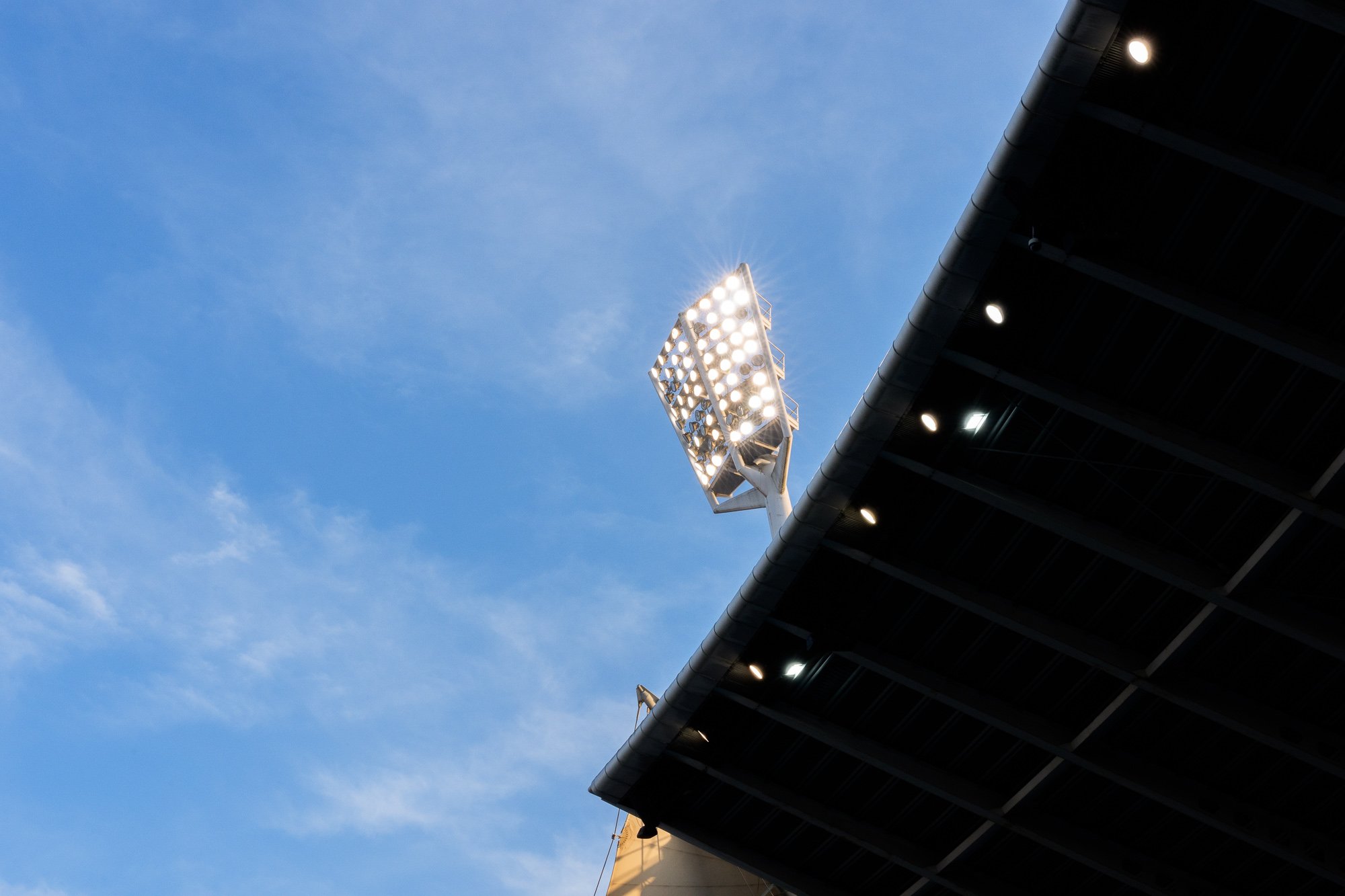


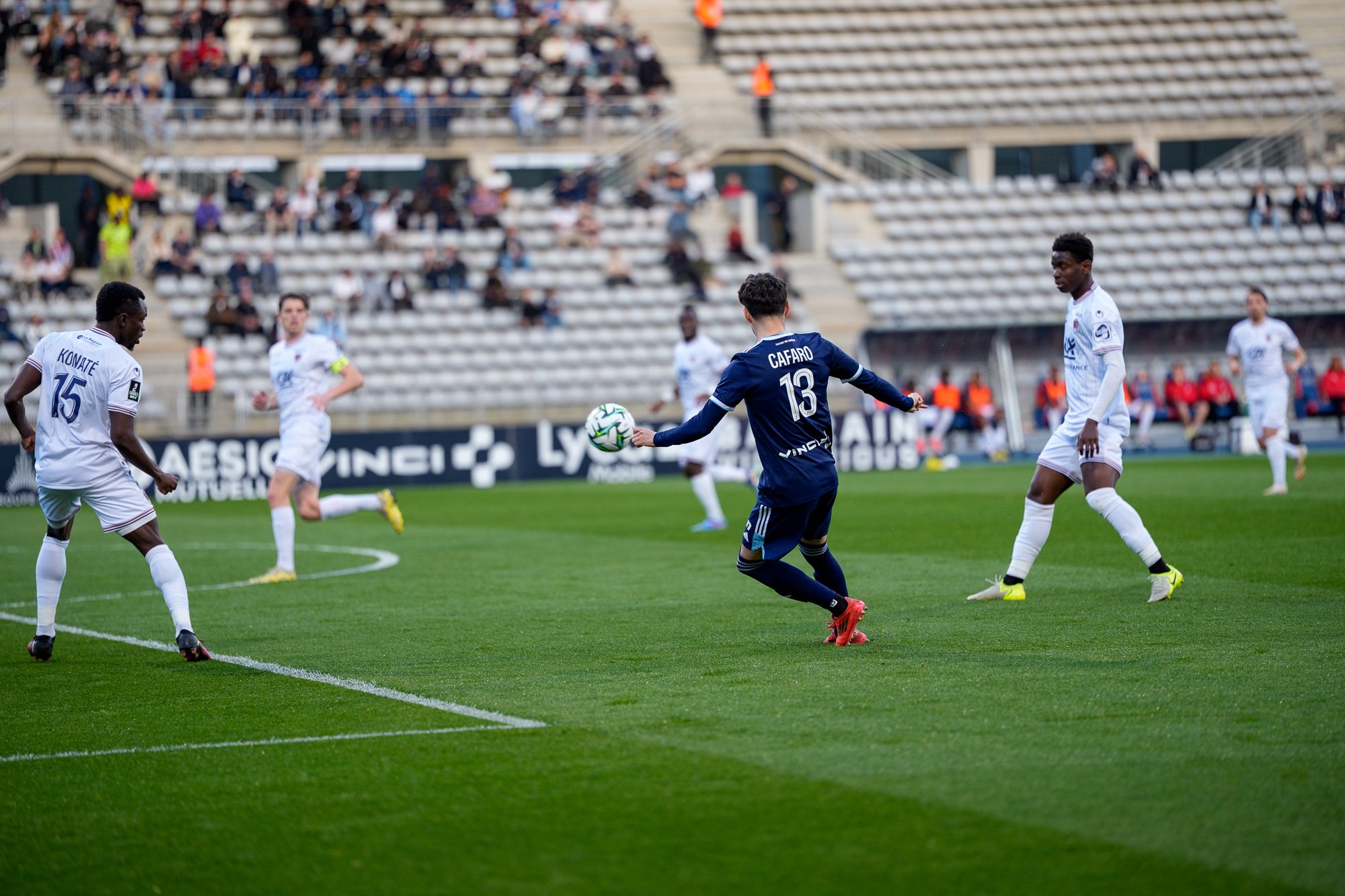

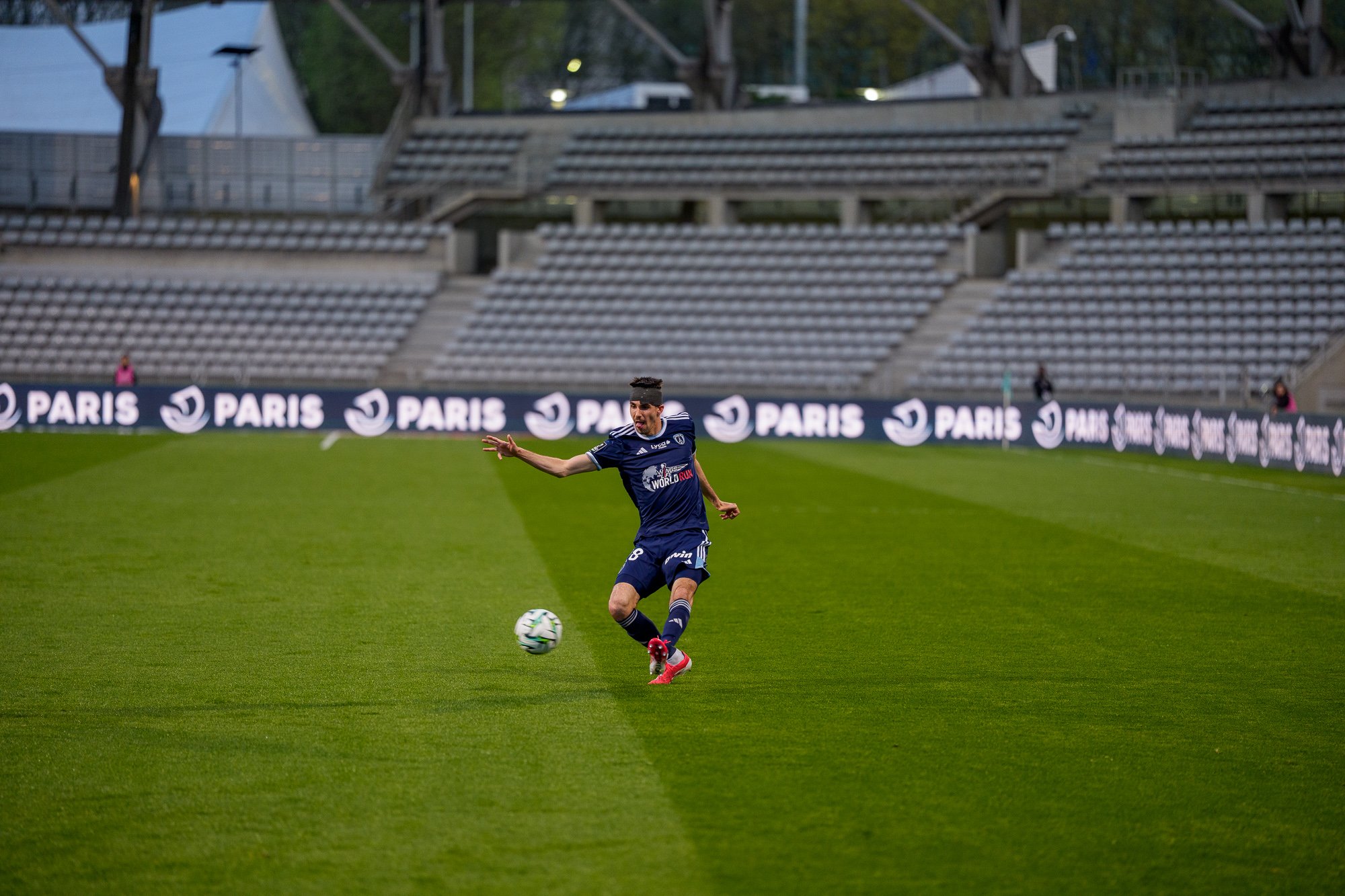


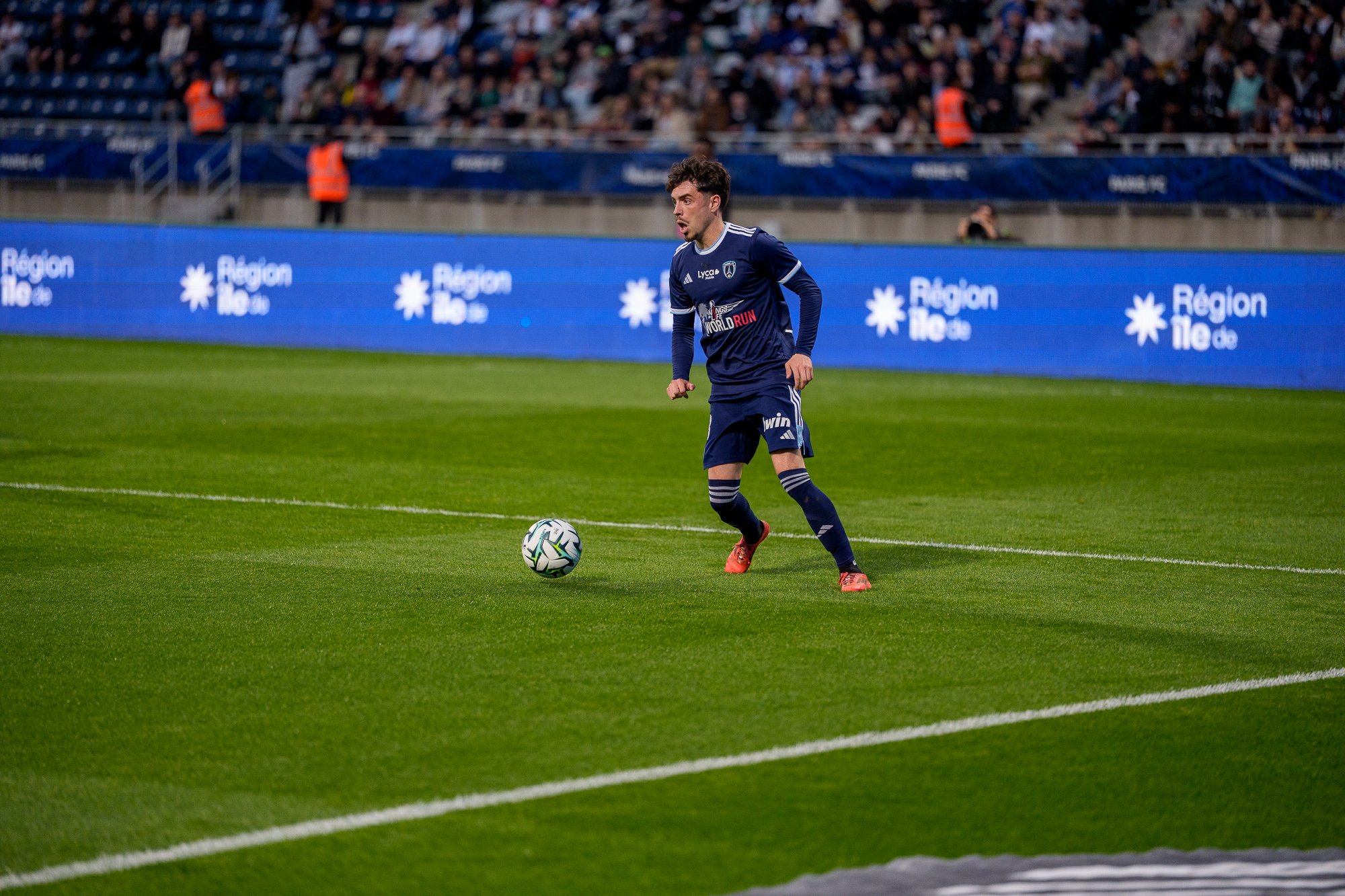
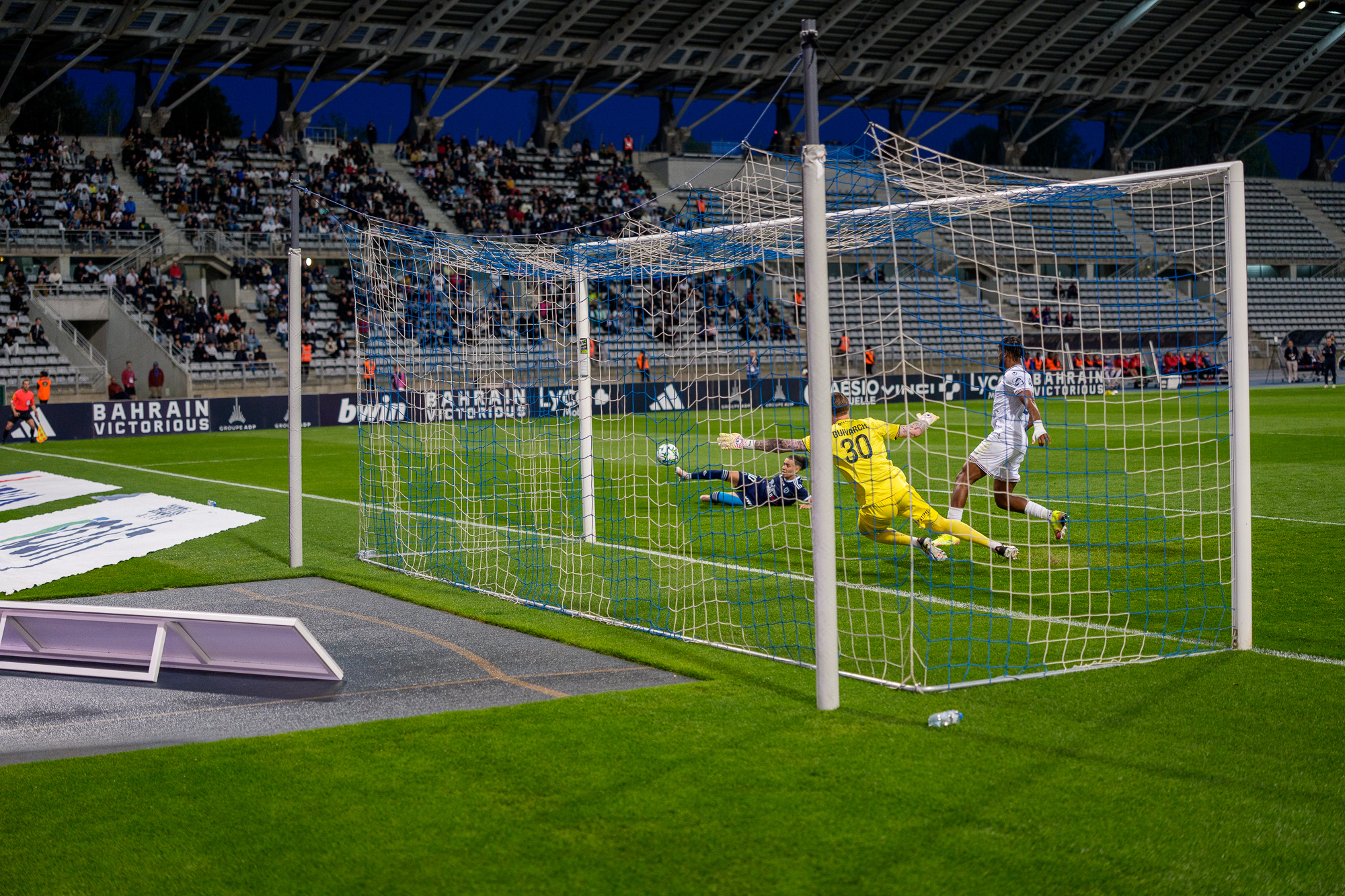




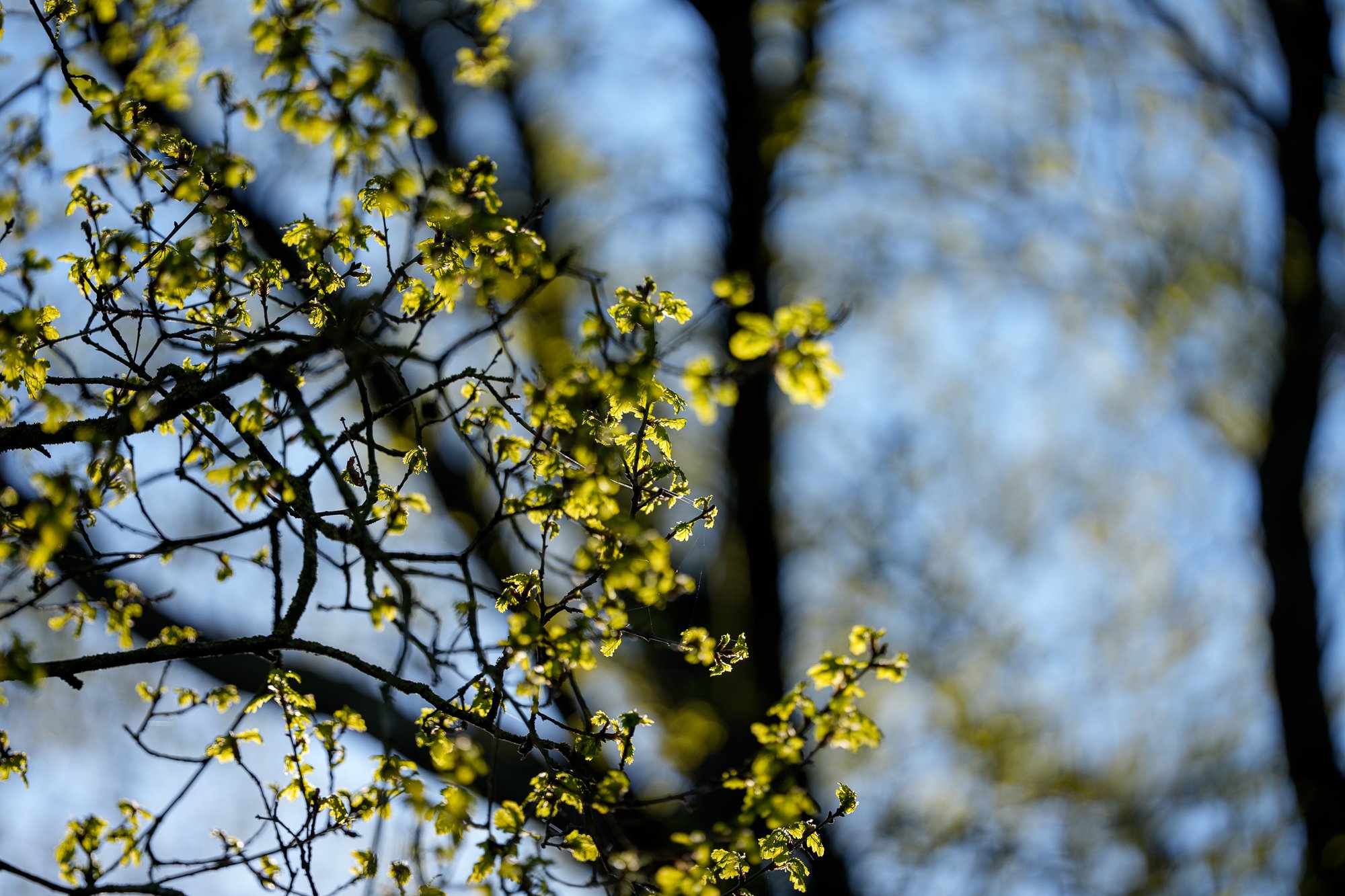











Against the Competition
Despite its unique focal range and aperture, there are a few more or less direct rivals to Sony’s 50-150 mm f/2 GM zoom.
The most obvious competitor is the Tamron 35-150 mm f/2-2.8 Di III VXD. Its focal range and maximum aperture are quite close. Launched in September 2021, it remains Tamron’s flagship zoom, praised for its versatility and fast but variable aperture. While not quite as technically impressive as Sony’s, it delivers very good image quality and advanced ergonomics — all for a significantly lower price of €1850.
Following a similar concept, we find the Samyang AF 35-150 mm f/2-2.8 FE. Unveiled in Spring 2023, this South Korean lens surprised many by mirroring the Tamron’s formula. It’s a solid alternative, offering decent image quality and good build — albeit with more weight. Most strikingly, it retails for just over €1000, making it four times cheaper than Sony’s GM lens.
More traditionally, we could also mention the well-known Sony FE 70-200 mm f/2.8 GM OSS II. Launched in October 2021, this telephoto zoom is still an almost flawless performer, offering excellent ergonomics and a featherweight build of just over 1 kg. Its optical sharpness at f/2.8 is top-tier, and the AF system is excellent. It’s still sold at its launch price of €2999.
Another strong contender is the Sigma 70-200 mm f/2.8 DG DN OS Sports. Released in October 2023, it delivers excellent sharpness and pro-grade build quality. Though heavier than Sony’s, it’s a top-tier lens priced at €1699.
Finally, let’s not forget the Tamron 70-180 mm f/2.8 Di III VC VXD G2. Released in September 2023, this second-generation stabilized model improves sharpness and keeps its weight in check. A great option — and attractively priced at €1489.
Sony FE 50-150 mm f/2 GM: a Remarkable Outlier
Sony continues to push the boundaries of optical design with the FE 50-150 mm f/2 GM. Incredibly versatile, it combines a wide constant f/2 aperture with pro-grade ergonomics, all packed into a surprisingly compact body for such a unique lens.
It delivers outstanding sharpness even wide open, and proves ideal for many photographic disciplines: portraits, weddings, indoor sports, and more. It’s clearly designed as a premium complement to the FE 28-70 mm f/2 GM, with very similar optical performance. Its autofocus system is also extremely accurate.
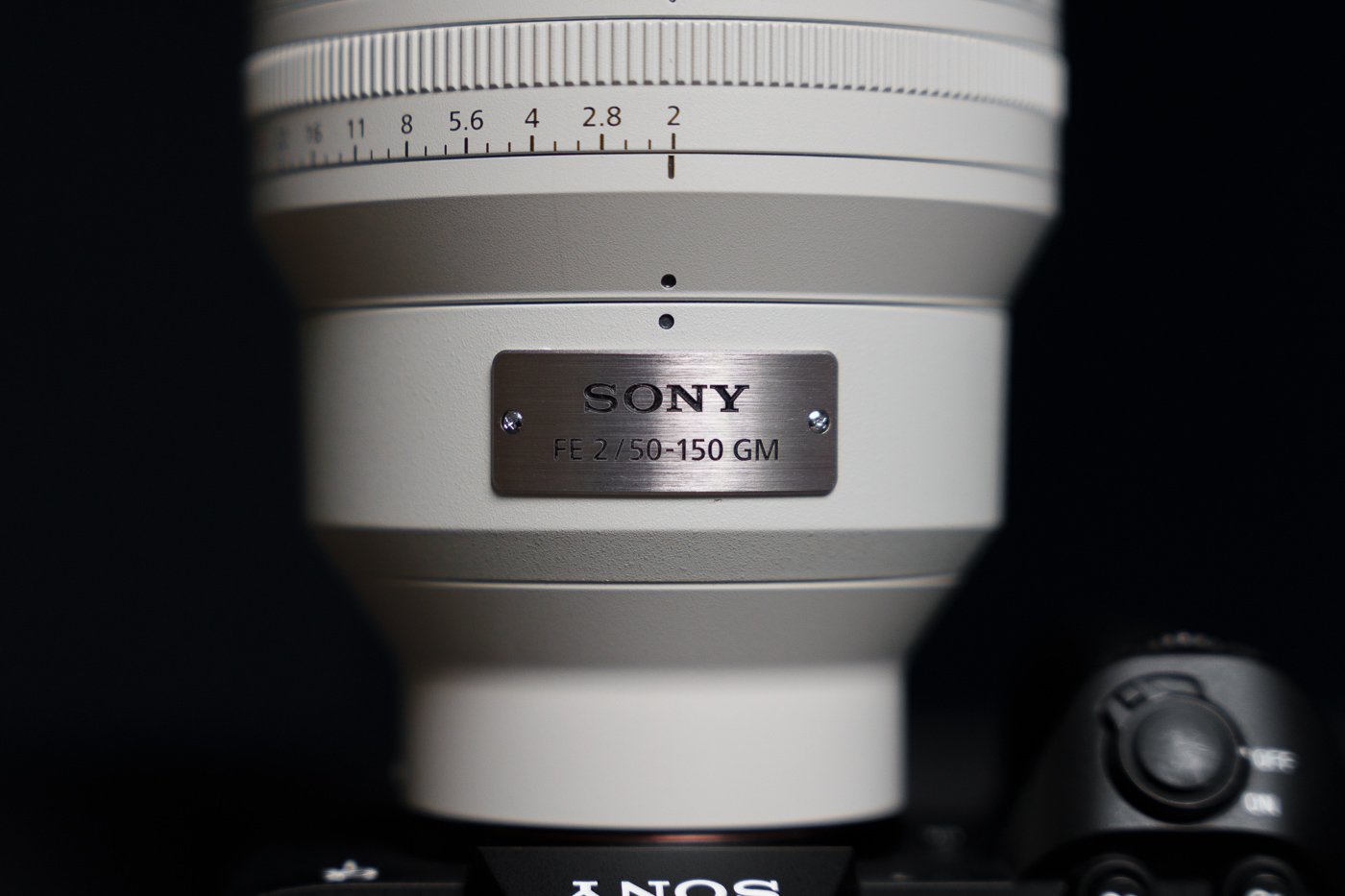
On the downside, despite its hefty size, it lacks optical stabilization, which would have been welcome. Also, the lens is not compatible with 1.4x or 2x teleconverters. Turning this zoom into a 100-300 mm f/4 would have made for an even more exciting proposition.
That said, the Sony FE 50-150 mm f/2 GM remains a truly impressive lens. Designed for the most demanding photographers, it comes with a steep price tag of $3,898. This makes it the most expensive lens in Sony’s lineup (excluding ultra-telephoto primes).

